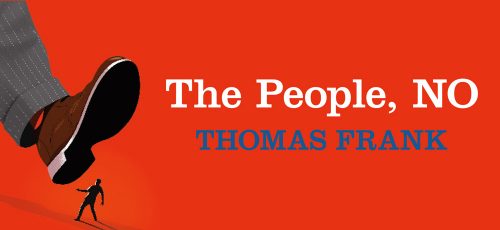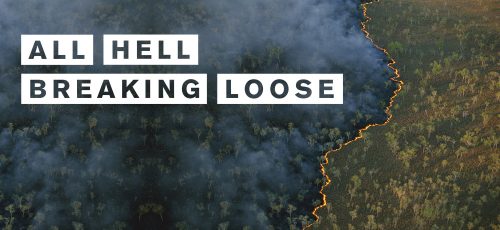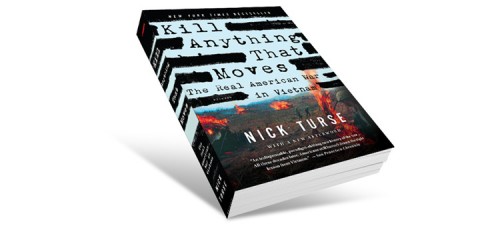The Blog
Recent Posts by American Empire Project Authors and other Influencers

Osama bin Laden Won (Twice)
Tom Engelhardt
It’s July 2020 and I’m about to turn 76, which, as far as I’m concerned, officially makes me an old man. So put up with my aging, wandering brain here, since (I swear) I wasn’t going to start this piece with Donald J. Trump, no matter his latest wild claims or bizarre statements, increasingly white nationalist and pro-Confederate positions (right down to the saving of the rebel stars and bars), not to speak of the Covid-19 slaughter of Americans he’s helped facilitate. But then I read about his demand for a “National Garden of American Heroes,” described as “a vast outdoor park that will feature the statues of the greatest Americans to ever live” and, honestly, though this piece is officially about something else, I just can’t help myself. I had to start there.
Yes, everyone undoubtedly understands why General George Patton (a Trump obsession) is to be in that garden, not to speak — given the president’s reelection politics — of evangelist Billy Graham, Supreme Court Justice Antonin Scalia, and former president Ronald Reagan. Still, my guess is that most of you won’t have the faintest idea why Davy Crockett is included. I’m talking about the frontiersman and Indian killer who died at the Alamo. Given my age, though, I get Donald Trump on this one and it gave me a rare laugh in a distinctly grim moment. That’s why I can’t resist explaining it, even though I guarantee you that the real subject of this piece is Osama bin Laden’s revenge.

What Was Populism?
Thomas Frank
Populism was the first of America’s great economic uprisings, a roar of outrage from people in the lower half of the country’s social order. It was a quintessential mass movement, in which rank-and-file Americans came to think of the country’s inequitable system as a thing they might change by common effort. It was a glimpse of how citizens of a democracy, born with a faith in equality, can sometimes react when the brutal hierarchy of conventional arrangements is no longer tolerable to them.
Populism was also our country’s final serious third-party effort, the last one to stand a decent chance of breaking the duopoly of the Republicans and Democrats. In the 1890s the two main parties were still basically regional organizations, relics of the Civil War; Populism transcended that system by making an appeal based on class solidarity, aiming to bring together farmers in the South and the West with factory workers in northern cities. “The interests of rural and civic labor are the same,” proclaimed the famous 1892 Omaha Platform of the People’s Party, and “their enemies are identical.” By which the Pops meant those who prospered while producing nothing: bankers, railroad barons, and commodity traders, along with their hirelings—corrupt politicians who served wealth instead of “the people.”
This was, of course, a time of unregulated corporate monopolies, of in-your-face corruption, and of crushing currency deflation—and it was also a time when everyone agreed that government’s role was to provide a framework conducive to business and otherwise to get out of the way. That was the formal ideal; the execution was slightly uglier, a matter of smoke and exploitation, bankruptcy and foreclosure, of cabinet seats for sale and entire state legislatures bought with free-ride railroad passes.

Racism, Yes, But What About Militarism and Materialism?
Andrew Bacevich
In the wake of the police killing of George Floyd, Americans are finally — or is it once again? — confronting the racism that afflicts this country and extends into just about every corner of our national life. Something fundamental just might be happening.
Yet to state the obvious, we’ve been here before. Mass protests in response to racial inequality and discrimination, including police brutality, have been anything but unknown in the United States. Much the same can be said of riots targeting black Americans, fomented and exploited by white racists, often actively or passively abetted by local law enforcement officials. If Jamil Abdullah Al-Amin, formerly known as H. Rap Brown, was correct in calling violence “as American as cherry pie,” then race-related urban unrest is the apple-filled equivalent.
The optimists among us believe that “this time is different.” I hope events will prove them right. Yet recalling expectations that Barack Obama’s election in 2008 signaled the dawn of a “post-racial America,” I see no reason to expect it to be so. A yawning gap, I fear, separates hope from reality.

Or How the American Century Ends
Tom Engelhardt
Let me rant for a moment. I don’t do it often, maybe ever. I’m not Donald Trump. Though I’m only two years older than him, I don’t even know how to tweet and that tells you everything you really need to know about Tom Engelhardt in a world clearly passing me by. Still, after years in which America’s streets were essentially empty, they’ve suddenly filled, day after day, with youthful protesters, bringing back a version of a moment I remember from my youth and that’s a hopeful (if also, given Covid-19, a scary) thing, even if I’m an old man in isolation in this never-ending pandemic moment of ours.
In such isolation, no wonder I have the urge to rant. Our present American world, after all, was both deeply unimaginable — before 2016, no one could have conjured up President Donald Trump as anything but a joke — and yet in some sense, all too imaginable. Think of it this way: the president who launched his candidacy by descending a Trump Tower escalator to denounce Mexican “rapists” and hype the “great, great wall” he would build, the man who, in his election campaign, promised to put a “big, fat, beautiful wall” across our southern border to keep out immigrants (“invaders!”) — my grandpa, by the way, was just such an invader — has, after nearly three and a half years, succeeded only in getting a grotesquely small wall built around the White House; in other words, he’s turned the “people’s house” into a micro-Green Zone in a Washington that, as it filled with National Guard troops and unidentified but militarized police types, was transformed into a Trumpian version of occupied Baghdad. Then he locked himself inside (except for that one block walk to a church through streets forcibly emptied of protesters). All in all, a single redolent phrase from our recent past comes to mind: mission accomplished!

A Journal of the Onset of the Plague Year
Ann Jones
Donald Trump is not a president. He can’t even play one on TV. He’s a corrupt and dangerous braggart with ill-concealed aspirations for a Crown and, with an election coming up, he’s been monopolizing prime time every day, spouting self-congratulation and misinformation. (No, don’t inject that Lysol!) His never-ending absurd performances play out as farce against the tragic background of the Covid-19 pandemic sweeping the nation. If we had a real president, which is to say, almost anybody else, things would be different. We would have seen the pandemic coming. It would not have attacked me in my old age. And most of the dead might still be alive.
The records of other countries make this clear. South Korea, Taiwan, Denmark, Finland, Germany, Iceland, New Zealand, and Norway have all had commendable success in protecting their people. Could it be by chance that seven out of eight of the most successful nations in combating the Covid-19 pandemic are headed by women? Tsai Ing-wen of Taiwan, Mette Frederiksen of Denmark, Sanna Marin of Finland, Angela Merkel of Germany, Katrín Jakobsdóttir of Iceland, Jacinda Ardern of New Zealand, and Erna Solberg of Norway have all been described in similar terms: as calm, confident, and compassionate leaders. All of them have been commended for thorough preparations, quick decisive action, and clear, empathic communication. Erna Solberg has even been hailed as the “landets mor,” the mother of her country.
Perhaps in such disturbing times as these we feel some primal yearning for a capable, comforting mother, but we need not resort to such psychological speculation. The fortunate countries turn out to be those with the fairness and foresight to have welcomed women into government decades ago.

The Killer-in-Chief
Tom Engelhardt
“Be assured of one thing: whichever candidate you choose at the polls in November, you aren’t just electing a president of the United States; you are also electing an assassin-in-chief.” So I wrote back in June 2012, with a presidential election approaching.
I was referring then to the war on terror’s CIA and military drone assassination programs, which first revved up in parts of the Greater Middle East in the years of George W. Bush’s presidency and only spread thereafter. In the process, such “targeted killings” became, as I wrote at the time, “thoroughly institutionalized, normalized, and bureaucratized around the figure of the president.” In Barack Obama’s years in the Oval Office, they were ramped up further as he joined White House “Terror Tuesday” meetings to choose individual targets for those attacks. They often enough turned out to involve “collateral damage”; that is, the deaths of innocent civilians, including children. In other words, “commander-in-chief” had, by then, gained a deadly new meaning, as the president personally took on the role of a global assassin.
I had little doubt eight years ago that this wouldn’t end soon — and on that I wasn’t wrong. Admittedly, our present commander-in-chief probably doesn’t have the time (given how much of his day he’s spent watching Fox News, tweeting his millions of followers, and, until recently, holding two hour press-briefings-cum-election-rallies on the coronavirus pandemic) or the attention span for “Terror Tuesday” meetings. Still, in his own memorable fashion, he’s managed to make himself America’s assassin-in-chief par excellence.

Energy in a Post-Pandemic World
Michael Klare
Energy analysts have long assumed that, given time, growing international concern over climate change would result in a vast restructuring of the global energy enterprise. The result: a greener, less climate-degrading system. In this future, fossil fuels would be overtaken by renewables, while oil, gas, and coal would be relegated to an increasingly marginal role in the global energy equation. In its World Energy Outlook 2019, for example, the International Energy Agency (IEA) predicted that, by 2040, renewables would finally supersede petroleum as the planet’s number one source of energy and coal would largely disappear from the fuel mix. As a result of Covid-19, however, we may no longer have to wait another 20 years for such a cosmic transition to occur — it’s happening right now.
So take a breath and, amid all the bad news pouring in about a deadly global pandemic, consider this: when it comes to energy, what was expected to take at least two decades in the IEA’s most optimistic scenario may now occur in just a few years. It turns out that the impact of Covid-19 is reshaping the world energy equation, along with so much else, in unexpected ways.
That energy would be strongly affected by the pandemic should come as no surprise. After all, fuel use is closely aligned with economic activity and Covid-19 has shut down much of the world economy. With factories, offices, and other businesses closed or barely functioning, there’s naturally less demand for energy of all types. But the impacts of the pandemic go far beyond that, as our principal coping mechanisms — social distancing and stay-at-home requirements — have particular implications for energy consumption.

The Coronavirus and the Real Threats to American Safety and Freedom
Andrew Bacevich
Americans are facing “A Spring Unlike Any Before.” So warned a front-page headline in the March 13th New York Times.
That headline, however hyperbolic, was all too apt. The coming of spring has always promised relief from the discomforts of winter. Yet, far too often, it also brings its own calamities and afflictions.
According to the poet T.S. Eliot, “April is the cruelest month.” Yet while April has certainly delivered its share of cataclysms, March and May haven’t lagged far behind. In fact, cruelty has seldom been a respecter of seasons. The infamous influenza epidemic of 1918, frequently cited as a possible analogue to our current crisis, began in the spring of that year, but lasted well into 1919.

And “Criminal Misconduct” Followed
Nick Turse
Last October, a group of eight Apache attack and CH-47 Chinook helicopters carrying U.S. commandos roared out of an airfield in Iraq. They raced through Turkish airspace and across the Syrian border, coming in low as they approached a village just north of Idlib Province where Islamic State leader Abu Bakr al-Baghdadi, his bodyguards, and some of his children were spending the night. The helicopters opened up with their machine guns, while military jets circled above and 50 to 70 members of the U.S. Army’s elite Delta Force stormed into a compound just outside the village of Barisha. When it was all over, Baghdadi’s home was rubble, an unknown number of people living in the area, including civilians, had been killed, and he and two of his children were dead — victims of a suicide vest worn by the ISIS chief.
That commando raid in Syria was the highest profile U.S. Special Operations mission of 2019, but it was just one of countless efforts conducted by America’s most elite troops. They also fought and died in Afghanistan and Iraq while carrying out missions, conducting training exercises, or advising and assisting local forces from Bulgaria to Romania, Burkina Faso to Somalia, Chile to Guatemala, the Philippines to South Korea.

Donald Trump is the Fakest (and Realest) News of All
Tom Engelhardt
Here’s the truth of it: I’d like a presidential pardon. Really, I would. And I think I deserve it more than Michael Milken or Rod Blagojevich or — because it’s obviously heading our way — Roger Stone (not to speak of Michael Flynn and Paul Manafort). Unlike the rest of them, I genuinely deserve a pardon because I don’t even remember being tried or know what I did. Yet somehow, here I am sentenced to what, if things don’t get better — given my age and his luck — could prove to be life not in prison but in Trumpland (once known as the United States of America).
Or here’s another possibility that came to mind as I was thinking over my predicament: maybe I can still use that old “get out of jail free card” I saved from my childhood Monopoly set. You know, the one at the bottom of which was written: “This card may be kept until needed or sold.” Well, I need it now. Unfortunately, it doesn’t seem to work anymore, maybe because it was produced before financialization stopped being a kid’s board game and became one for presidents, presidential candidates, and those recently pardoned by you-know-who.
If only this were simply a game I found myself trapped in — Trumpopoly. Unfortunately, it’s no board game, though I must admit that, more than three years later, I’m officially bored with the man who has surely gotten more attention, more words spoken and written about him, than anyone in history. Even if you included Nebuchadnezzar, Joseph Stalin, and Mao Zedong, I doubt he would have any serious competition.

Or Going Off-Script in the Age of Trump
Andrew Bacevich
The impeachment of the president of the United States! Surely such a mega-historic event would reverberate for weeks or months, leaving in its wake no end of consequences, large and small. Wouldn’t it? Shouldn’t it?
Truth to tell, the word historic does get tossed around rather loosely these days. Just about anything that happens at the White House, for example, is deemed historic. Watch the cable news networks and you’ll hear the term employed regularly to describe everything from Oval Office addresses to Rose Garden pronouncements to press conferences in which foreign dignitaries listen passively while their presidential host pontificates about subjects that have nothing to do with them and everything to do with him.
Of course, almost all of these are carefully scripted performances that are devoid of authenticity. In short, they’re fraudulent. The politicians who participate in such performances know that it’s all a sham. So, too, do the reporters and commentators paid to “interpret” the news. So, too, does any semi-attentive, semi-informed citizen.
Yet on it goes, day in, day out, as politicians, journalists, and ordinary folk collaborate in manufacturing, propagating, and consuming a vast panoply of staged incidents, which together comprise what Americans choose to treat as the very stuff of contemporary history. “Pseudo-events” was the term that historian Daniel Boorstin coined to describe them in his classic 1961 book The Image: A Guide to Pseudo-Events in America. The accumulation of such incidents creates a make-believe world. As Boorstin put it, they give rise to a “thicket of unreality that stands between us and the facts of life.”

Making Sense of the Age of Carnage
Tom Engelhardt
My first question is simple enough: After 18-plus years of our forever wars, where are all the questions?
Almost two decades of failing American wars across a startlingly large part of the planet and I’d like to know, for instance, who’s been fired for them? Who’s been impeached? Who’s even paying attention?
I mean, if another great power had been so fruitlessly fighting a largely undeclared set of conflicts under the label of “the war on terror” for so long, if it had wasted trillions of taxpayer dollars with no end in sight and next to no one in that land was spending much time debating or discussing the matter, what would you think? If nothing else, you’d have a few questions about that, right?
Well, so many years later, I do have a few that continue to haunt me, even if I see them asked practically nowhere and, to my frustration, can’t really answer them myself, not to my satisfaction anyway. In fact, since 2001 — with the exception of the months leading up to the invasion of Iraq when America’s streets suddenly filled with hundreds of thousands of demonstrators asking a range of questions (“How did USA’s oil get under Iraq’s sand?” was a typical protest sign of that moment) — our never-ending wars have seldom been questioned in this country. So think of what follows not as my thoughts on the war in question but on the war in questions.

U.S. Troops Head for the Far North
Michael Klare
In early March, an estimated 7,500 American combat troops will travel to Norway to join thousands of soldiers from other NATO countries in a massive mock battle with imagined invading forces from Russia. In this futuristic simulated engagement — it goes by the name of Exercise Cold Response 2020 — allied forces will “conduct multinational joint exercises with a high-intensity combat scenario in demanding winter conditions,” or so claims the Norwegian military anyway. At first glance, this may look like any other NATO training exercise, but think again. There’s nothing ordinary about Cold Response 2020. As a start, it’s being staged above the Arctic Circle, far from any previous traditional NATO battlefield, and it raises to a new level the possibility of a great-power conflict that might end in a nuclear exchange and mutual annihilation. Welcome, in other words, to World War III’s newest battlefield.
For the soldiers participating in the exercise, the potentially thermonuclear dimensions of Cold Response 2020 may not be obvious. At its start, Marines from the United States and the United Kingdom will practice massive amphibious landings along Norway’s coastline, much as they do in similar exercises elsewhere in the world. Once ashore, however, the scenario becomes ever more distinctive. After collecting tanks and other heavy weaponry “prepositioned” in caves in Norway’s interior, the Marines will proceed toward the country’s far-northern Finnmark region to help Norwegian forces stave off Russian forces supposedly pouring across the border. From then on, the two sides will engage in — to use current Pentagon terminology — high-intensity combat operations under Arctic conditions (a type of warfare not seen on such a scale since World War II).
And that’s just the beginning. Unbeknownst to most Americans, the Finnmark region of Norway and adjacent Russian territory have become one of the most likely battlegrounds for the first use of nuclear weapons in any future NATO-Russian conflict. Because Moscow has concentrated a significant part of its nuclear retaliatory capability on the Kola Peninsula, a remote stretch of land abutting northern Norway — any U.S.-NATO success in actual combat with Russian forces near that territory would endanger a significant part of Russia’s nuclear arsenal and so might precipitate the early use of such munitions. Even a simulated victory — the predictable result of Cold Response 2020 — will undoubtedly set Russia’s nuclear controllers on edge.

See Page Five
Tom Engelhardt
So you won’t be surprised to learn that its front page was essentially all Iran and The Donald. Atop it, there was a large photo of the president heading for a podium with his generals and officials lined up on either side of him. Its caption read: “‘The United States is ready to embrace peace with all who seek it,’ President Trump said Wednesday at the White House.” Beside it, the lead story was headlined “U.S. and Iranians Lower Tensions, at Least for Now.” Below were three more Iran-related pieces, taking up much of the rest of the page. (“A President’s Mixed Messages Unsettle More Than Reassure,” etc.)
At the bottom left, there was a fifth Iran-related article. Inside that 24-page section of the paper, there were seven more full pages of coverage on the subject. Only one other piece of hot news could be squeezed (with photo) onto the bottom right of the front page. And whether you still read actual papers or now live only in the world of the Internet, I doubt you’ll be shocked to learn that it focused on Meghan Markle and Prince Harry, already involved in a crisis among the British Royals that was almost Iranian in its intensity. The headline: “In Stunning Step, Duke and Duchess Seek New Title: Part-Timers.”

The “Revolution of ’89” Reassessed
Andrew Bacevich
Thirty years ago this month, President George H.W. Bush appeared before a joint session of Congress to deliver his first State of the Union Address, the first post-Cold War observance of this annual ritual. Just weeks before, the Berlin Wall had fallen. That event, the president declared, “marks the beginning of a new era in the world’s affairs.” The Cold War, that “long twilight struggle” (as President John F. Kennedy so famously described it), had just come to an abrupt end. A new day was dawning. President Bush seized the opportunity to explain just what that dawning signified.
“There are singular moments in history, dates that divide all that goes before from all that comes after,” the president said. The end of World War II had been just such a moment. In the decades that followed, 1945 provided “the common frame of reference, the compass points of the postwar era we’ve relied upon to understand ourselves.” Yet the hopeful developments of the year just concluded — Bush referred to them collectively as “the Revolution of ’89” — had initiated “a new era in the world’s affairs.”
While many things were certain to change, the president felt sure that one element of continuity would persist: the United States would determine history’s onward course. “America, not just the nation but an idea,” he emphasized, is and was sure to remain “alive in the minds of people everywhere.”
